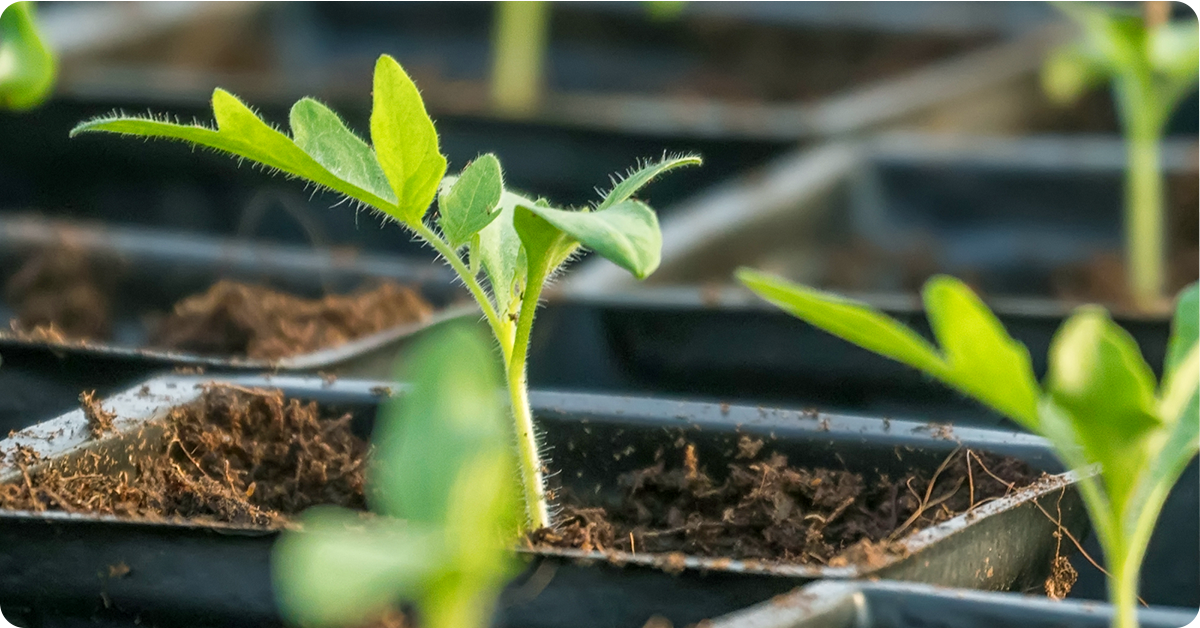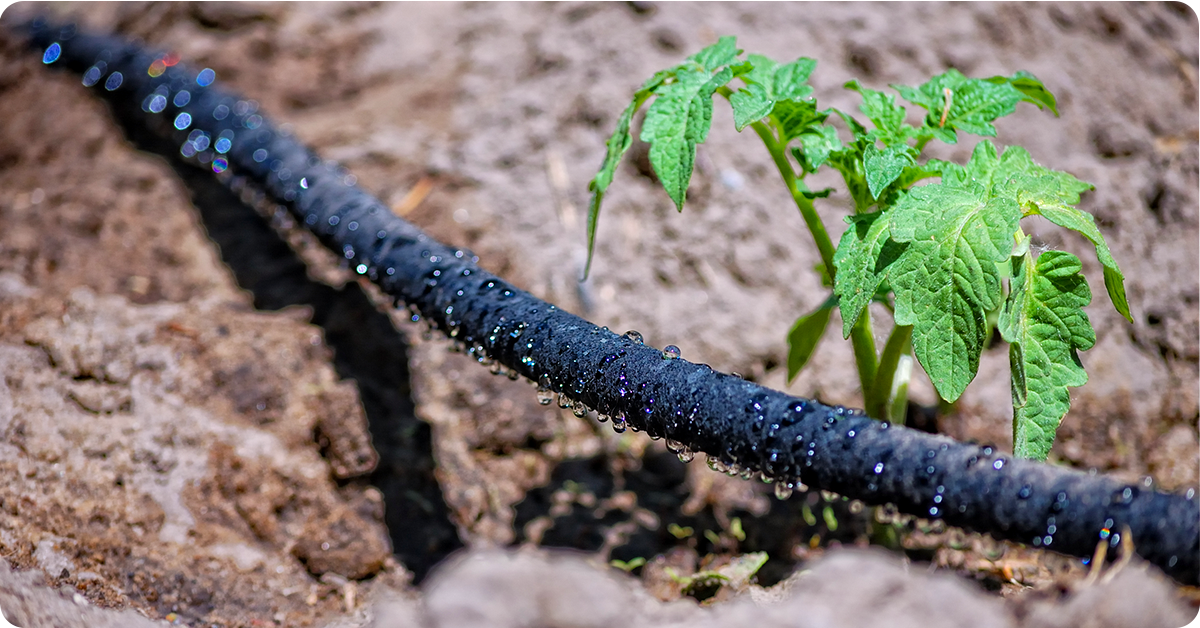
How, Where and When to Plant Your Garden
Before you can enjoy juicy, home-grown tomatoes in salads, sauces, and countless other recipes, you’ll need to get your tomato plants off to a healthy start. Planting tomatoes at the right time—and in the right location—can make all the difference between a bounteous harvest and months of (pardon the pun) fruitless efforts. That's why we’ve consulted with our gardening pros to bring you handy tips on when to plant your tomatoes, how much sun tomatoes need, and some other important things to keep in mind this growing season.
When to Plant Tomatoes
Knowing when to plant tomatoes can save you the pain of nurturing your plants all summer, only for the first frost to wipe out all your hard work just before they’re ready to harvest. On the other hand, planting your tomatoes too early can send them to the great compost heap in the sky before they’ve even had a chance to grow deep roots.
 It’s important to plant your tomatoes after the last frost of the spring, ideally when high temperatures are between 65-75 degrees Fahrenheit and nighttime lows are in the 50s. In the Intermountain West, that means you’re usually safe planting tomatoes around Mother’s Day, though keep in mind that’s a rule of thumb rather than a foolproof strategy.
It’s important to plant your tomatoes after the last frost of the spring, ideally when high temperatures are between 65-75 degrees Fahrenheit and nighttime lows are in the 50s. In the Intermountain West, that means you’re usually safe planting tomatoes around Mother’s Day, though keep in mind that’s a rule of thumb rather than a foolproof strategy.
As for the soil temperature itself, you should be aiming for around 60 degrees when you plant your tomatoes. Some products like Season Starter Plant Protectors or Hotkaps can work like miniature greenhouses to insulate your plants and warm the surrounding soil, extending the window of when to plant your tomatoes and potentially enabling earlier harvests.
Where to Plant Tomatoes
The best place to plant your tomatoes is in a location within your garden that gets full sun—at least 8-10 hours of direct light every day, though the hours don’t necessarily need to be consecutive. For people who live in the Northern Hemisphere, south- and west-facing garden plots will get the most sun.
In addition to providing plenty of sunlight, you’ll want to plant your tomatoes in soil that drains well and evenly, which keeps your plants’ water intake consistent and prevents their roots from developing issues like mold. Raised garden beds can work well, just make sure you leave enough space so your tomatoes can grow without competition (at least 18-24 inches between plants—more on that later).
Finally, make sure the location where you’re planting your tomatoes is easy to access come harvest time. You don’t want to be bushwhacking your way through a tomato jungle or trotting all over the rest of your garden when gathering your fruit. You may want to rethink locations where your tomato plants could be difficult to reach once your garden is full of thriving fruits and veggies.

How to Plant Tomatoes
Growing Tomato Plants from Seeds
 Growing your own tomato plants from seeds takes a little more time and effort, but it’s fun and rewarding to watch them progress from tiny sprouts to strong, healthy vines. To grow tomatoes from seeds, you’ll need to plan ahead and start your seedlings indoors about 6-8 weeks before you expect to be planting your tomatoes in the garden.
Growing your own tomato plants from seeds takes a little more time and effort, but it’s fun and rewarding to watch them progress from tiny sprouts to strong, healthy vines. To grow tomatoes from seeds, you’ll need to plan ahead and start your seedlings indoors about 6-8 weeks before you expect to be planting your tomatoes in the garden.
All you’ll need is some tomato seeds, seedling trays and soil, and a good light source. Add seedling mix to your seedling trays, and poke a hole around a quarter-inch deep. Drop in your seeds and cover the hole with a little more seedling mix, before lightly compressing the soil. Then, simply add water and wait for your seeds to sprout!
Once your tomato seeds have germinated and grown above the soil, they’ll need plenty of light—around 14-16 hours per day. You can use either natural or fluorescent light, just make sure that your seedlings are never more than a few inches away from their light source or else your plants can end up leggy and fragile, with a less than ideal harvest.
If you’re growing tomato plants from seeds, you’ll need to “harden them off” before transplanting them into your garden. Start by putting your seedlings outside for just an hour or two, and build up their tolerance over several days before eventually leaving them outside for their first open-air sleepover.
After your tomato seedlings have grown six to 10 inches tall and have three to four sets of leaves, they’re ready for their long-term home in your garden.
Transplanting Tomato Plants
Of course, planting tomato plants in your garden requires digging a few holes—but how deep, and how far apart should they be? According to our gardening experts, the optimal distance for planting your tomatoes is between 18 to 24 inches apart. Proper tomato plant spacing helps your tomatoes establish healthy roots, and also gives you enough space to harvest your fruit in a few months.
As far as how deep you should plant your tomatoes, you’ll want to dig deeper than the pot your plants are currently living in. See all those little hairs on the stem of your tomato plant? Those are called trichomes, and they’ll turn into roots if they’re buried beneath the soil. Planting deep encourages stronger roots and better moisture uptake, which ultimately leads to bigger harvests of more delicious tomatoes!
Once you’ve dug your holes, now’s a good time to add some 16-16-8 garden fertilizer and/or a root stimulator. Take off a couple of the bottom sets of leaves and carefully place your plants in their new homes, before backfilling the soil, gently patting it down, and giving all of them a good, deep watering.

How to Use Tomato Cages
If you’re trying to maximize garden space, using tomato cages to help your plants grow vertically can be a great solution. To prevent damaging the root systems of your tomato plants, it’s a good idea to install your tomato cages shortly after transplanting, before your plants grow larger and their roots expand into the surrounding soil.
To use your tomato cages properly, make sure the legs are inserted at least 6 inches into the soil to provide a stable foundation for your plants. As your tomato plants grow, gently guide the vines through the cage, and when necessary, secure heavier stems with twine, yarn, or string. If you prefer, you can also use a trellis or wire panels rather than tomato cages.
How to Care for Young Tomato Plants
Until your tomato plants are around three feet tall, you’ll want to pick off any fruit or flowers that develop. This will help your tomatoes focus on building stronger roots and hardier stems that can handle the weight of the fruit they’ll soon be growing.
Just like it says in our tips for growing great tomatoes, make sure to give your tomatoes 1-2 inches of water every week. A deep soaking once every few days is better than consistent sprinkling every day.

Once your tomato plants reach that three-foot mark, you may want to consider switching to a blooming fertilizer (something like Fertilome 9-58-8 Blooming & Rooting) to give your plants more of the nutrients they need to create those tasty tomatoes.
And of course, be sure to keep an eye on the weather. If a surprise cold snap drops nighttime temperatures below 40 degrees, you’ll want to cover your plants. You can use a tarp, a frost blanket, or even cover them with a bucket. Just make sure to uncover them again once the weather gets warmer and sunnier so your tomato plants can breathe and get the sunlight they need to thrive.
With these tips, you should have all the know-how you need to get your tomatoes off to a great start. But if you’ve still got questions about planting tomatoes, don’t hesitate to stop by your local IFA Country Store and talk to one of our gardening pros—we’re always here to help!
Information for this article was provided by Brenda Christophersen, Garden Center Manager, Ogden IFA Country Store; Brinn Hutcheon, Garden Center Asst. Manager, Riverton IFA Country Store; and Marvin Potter, Garden Center and Live Plants Category Manager, IFA Country Store.

















